There are many benefits of indoor plants, whether it be for your home, school or workplace. These benefits go far beyond the beauty and visual effects (aesthetics) of bringing some of nature indoors.
Not only will well-maintained indoor plants instantly enhance your home or office by always looking vibrant and fresh, but any employees and customers will reap the rewards too. Indoor plants assist in cultivating a more harmonious environment and can promote improved concentration, productivity and creativity.
Studies by NASA have also revealed the ability of some plant species to remove harmful toxins from the indoor air we breathe. Given that the majority of us spend a considerable amount of time indoors, plants can play an important role in a healthy indoor built environment.
There’s no doubt that greener offices promote happier and more productive workplaces, and that bringing plants into the home can create a cosy environment. When indoor plants are cared for and nurtured, they are highly beneficial to our health and wellbeing. They contribute to a healthier indoor working environment by providing cleaner air, reduced sickness and stress leave, and increased productivity and job satisfaction.
By implementing a healthy green office, your staff will feel appreciated and know that you care about them and the image that your business delivers to visitors and prospective clients.
We could talk about the benefits of indoor plants all day, but in the essence of time, here are some of the top reasons why plants can help you in your home, school or workplace.
Indoor plants can:
Perhaps you love the idea of having plants in your workspace for a greener office, but you lack a green thumb or you’re not sure where to start. We offer a complete Indoor Plant & Pot Rental Service and Maintenance Program. This ensures you always have a gorgeous display of healthy living indoor plants in our stylish designer hire pots.
Another stylish option to green your office is with one of our stunning living Green Walls. Because our Green Wall range is so diverse, there’s sure to be a style to suit your space, design and budget.
It’s common knowledge that plants put oxygen into the air and take pollutants out. But what exactly are these pollutants? What are the benefits of certain plants at improving air quality?
Plants have more than just decorative qualities. While fake plants create atmosphere and image, LIVING PLANTS do so much more! Living plants in homes, schools or offices reduce the levels of air pollution and volatile organic compounds which are emitted by materials in computers, photocopiers, furniture and fittings along with microorganisms from people.
Toxins, chemicals and odours (invisible yet ever present) cause the obvious headaches, eye, nose and throat irritations, nausea and stress and the not so obvious ‘bad’ moods like low motivation and lethargy. One of the most impressive benefits of indoor plants is removing these air toxins and improving air quality to create a healthy and productive home or workplace.
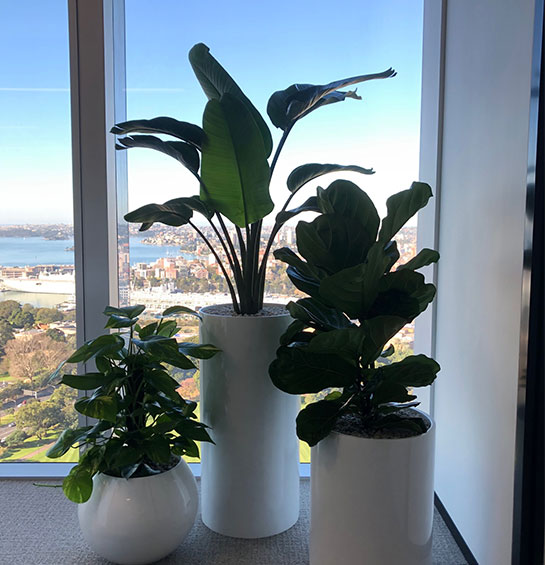
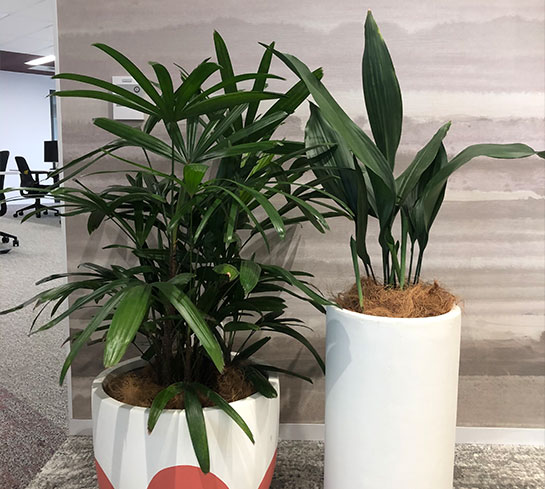
Indoor plants are our best friends when it comes to the indoor air we breathe because they do the exact opposite of what we do. They release oxygen and absorb carbon dioxide. They help to remove harmful toxins known as Volatile Organic Compounds (VOCs) from the air. These toxins are commonly found in our indoor environments and caused by plastics, carpets, paints, cleaning agents and furniture.
Certain indoor plants can benefit us by bringing about 50% reduction in CO2 levels, bacteria and mould. Plants can also reduce dust levels by up to 20%, which is good news for allergy and hayfever sufferers.
Too much carbon dioxide and not enough oxygen in an indoor work space has been linked to drowsiness and lowered concentration.
How fantastic it is to think that all of these problems can be avoided by giving employees simple desk plants!
First, let’s talk pollutants. NASA has a vested interest in the benefits of indoor plants and how indoor plants clean air. With an aim to create a breathable atmosphere in space, NASA has provided a handy list of dangerous chemicals, their symptoms, and the plants that can best remove them.
Ammonia, xylene, benzene, formaldehyde, and trichloroethylene all occur in regular domestic items. Cleaning products, plastics, printing inks, adhesives, even facial tissues can contain any combination of the five. They can cause irritation to the eyes, nose, mouth, throat, as well as general headaches and nausea. Xylene can even damage the liver and kidney as well as causing heart problems. Formaldehyde can swell the lungs and larynx in extreme cases. Benzene can cause unconsciousness. And Trichloroethylene exposure can lead to vomiting, then drowsiness and a comatose state.
The benefits of indoor plants in terms of providing clean indoor air was first discovered in the 1980s and since then, significant research has been conducted to define and quantify these benefits. In summary, current research shows that having plants in the workplace will help clean indoor air and achieve the following at work:
The most recent research, conducted at the University of Technology Sydney (Burchett et al, Feb. 2010) provides a compelling case for indoor plants. This research provided further evidence for the benefits of indoor plants for occupant wellbeing. The report conclusively demonstrated that indoor potted-plants can eliminate high or low doses of airborne VOCs within 24 hours. Indoor plants clean indoor air we breathe.
Indoor plants provide an increase in oxygen and work as natural humidifiers. This allows for easy breathing within confined spaces. Our aim is to provide the most suitable office plant hire that will assist with the indoor air quality.
Professional indoor plant hire is highly effective in improving Indoor Environmental Quality (IEQ). A study performed by UTS explains how plants contribute to over 75% of the criteria for IEQ.
We spend more than 90% of our time indoors so our IEQ is a major factor to take into account. Over 80% of Australians live in cities, where we spend about 90% of our time indoors. A number of studies have shown that indoor air generally contains higher levels of contaminants than outdoor air – often several times higher concentrations. Over 350 VOCs have been identified in indoor air, and although usually in very low concentrations, they are now recognized as causative agents of ‘sick-building syndrome’ or ‘building-related illness’ – symptoms including headaches, sore eyes or throat, loss of concentration, nausea & breathing problems.
There is a fine science behind the benefits of indoor plants in cleaning air. For clean office air, it’s a good idea to get to know each species. Choosing a plant for indoor plant hire becomes a lot less complex once you know how each plant contributes to office air quality.
The peace lily acts as a sort of catch-all. The five chemicals we listed above are all part of the peace lily’s pollutants removed. It’s also ranked at number 10 out of 50 on Dr. Wolverton’s list. It’s even known to remove mould spores. It has truly earnt its reputation as a ‘clean air machine’. Its iconic, serene flowers are a welcome bonus for any interior.
Because it is a flowering plant, office staff can enjoy a fragrant placement during the peace lily blooming season. Of course, this means the peace lily triggers pollen allergies in affected people. Because of this and its ability to catch all five common indoor pollutants, peace lilies are best placed as individual plants.

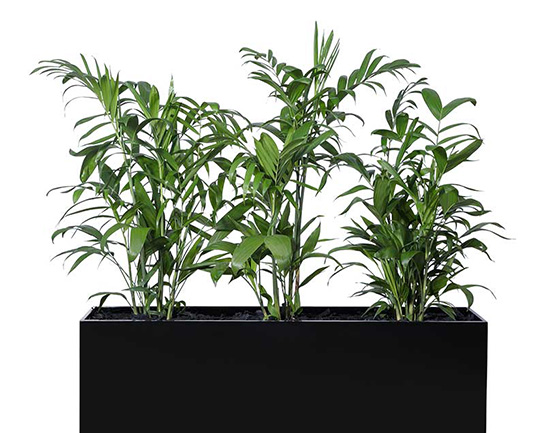
The bamboo palm is ranked at a stellar 3 out of 50 on Dr. Wolverton’s list. Pollutants removed from the air include xylene and formaldehyde. Not only is it a boon for clean office air, the bamboo palm has also made its mark as a popular winter plant. It acts as a natural humidifier, meaning those dry winter months need not be so dry. Its palm-like appearance most naturally evokes feelings of warmer climates, so onlookers feel mentally invigorated.
Not all indoor plants clean air equally. Although powerful, each species has its own nuances to consider and take advantage of.
There is now proof, through strong research, about the benefits of indoor plants for both employees and employers. Isn’t it time you ordered some desk plants for your office space?
In addition to all the wonderful benefits indoor plants have on our physical health, they’ve also been shown to improve our mental health at both work and home. This is particularly important as we emerge from lockdowns around the world and need a boost in productivity and optimism.
The presence of living indoor plants has been linked to many psychological health benefits. Many of us appreciate the visual beauty that real living indoor plants can bring to an interior space. More importantly though, the psychological benefits of indoor plants can have a positive impact on the wellbeing of employees in the workplace. A healthy mind is a creative, productive mind.
It’s estimated that 80% of the population now live in urban areas and most of us spend around 90% of our time indoors. If we think about it, we are missing out on the natural wonder of nature that awaits us outside.
As human beings, we have a natural desire to connect with nature and scientists use the term Biophila. So, if we can’t be outdoors with nature, then it makes perfect sense to bring nature indoors.
A living green design in your office of home is a great investment in your wellbeing. Living plants can improve job performance and soothe mental stress and illness. Colour Psychology suggests that the colour green reflects a relaxing, calming feeling. This is because the colour green is connected with nature.
Here are some of the psychological benefits of having indoor office plants.
Some of us spend most of our working day in an indoor environment. We’re usually surrounded by carpets, fluorescent lighting, office machines and blank walls. This can impact us in a negative way.
A study conducted by the UTS (University of Technology, Sydney) found significant reductions in stress among staff when indoor plants were introduced to their workspace. Results included a 37% fall in reported tension and anxiety; a 58% drop in depression or dejection; a 44% decrease in anger and hostility and a 38% reduction in fatigue.
Another study by researchers in 2015 at Chungnam National University in Korea that investigated the benefits of indoor plants found they help to sooth people by suppressing the sympathetic nervous system.
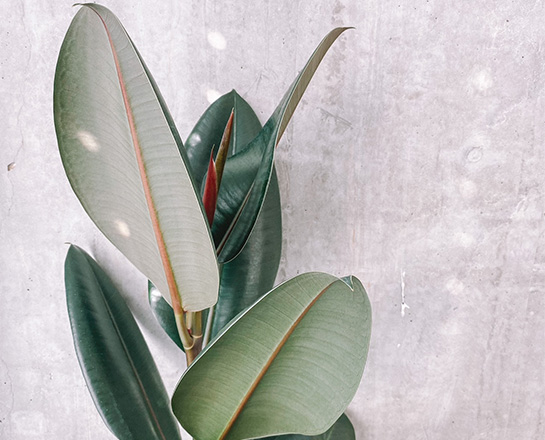
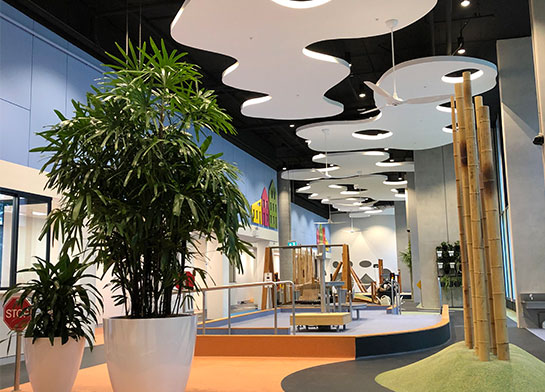
The environment in which we work can greatly affect our mood. Being around some living greenery at work, home or school can do wonders for our mental energy. Nature can make us feel happier and more content.
It’s a known fact that plants produce oxygen, the very thing humans need to survive. Indoor plants clean the air we breathe. With the correct lighting, indoor plants can reduce CO2 levels inside buildings. Air that is cleaner and healthier leads to clearer thinking.
Studies by UTS Science Strategy show that staff with one or more indoor plants in their office showed reductions of 40%-60% in anxiety, depression, negativity, stress and anger. With these conditions on the increase, indoor plants for the office are a small investment to reduce these conditions for your staff.
“Again and again, nature is found to lift our spirits, making us calmer and happier – but plant life provides further benefits. From clinical anxiety to addiction recovery, looking at plant life has been found to improve conditions …” (Nursery & Garden News February 2010, article HAL reporting on Project Investments, extract from ‘Plants to the Rescue’ UK conference report)
In green-built hospitals, patients heal faster and are being discharged on average two and a half days earlier. Fake plastic and silk plants can’t replace live, healthy indoor plants. “If someone does fall ill, there is mounting evidence that seeing green while you are in hospital will speed your recovery and reduce the amount of severe post-operative pain you feel …” (Nursery & Garden News February 2010, article HAL reporting on Project Investments, extract from ‘Plants to the Rescue’ UK conference report)
Many businesses are looking at ways to renew the workplace post Covid-19. Renting office plants is an easy solution to welcome your staff back to work.
As we navigated the uncertainty of the pandemic, we were forced to isolate and adjust to social distancing rules. During this time, we have spent a considerable amount of time indoors and may feel our connection with nature is a little off-course.
The thought of returning to work may feel daunting. Now more than ever, it’s important to create a welcoming, healthy and safe working environment to ease the transition of your staff’s return to work.
Health and hygiene are at the forefront of everyone’s mind, but not all is doom and gloom. Using floor plants, desk plants, hanging plants and green walls, we have a solution for dividing areas and encouraging workplace social distancing. This is a time to embrace change and trust the process as we adjust to a new normal.
There are many ways you can utilise the benefits of indoor plants to create a happier and healthier workplace. In addition to strict hygiene practices and social distancing measures, there’s no doubt that indoor plants can also improve your work life. Indoor office plants can certainly play an important role in employee health and wellbeing.
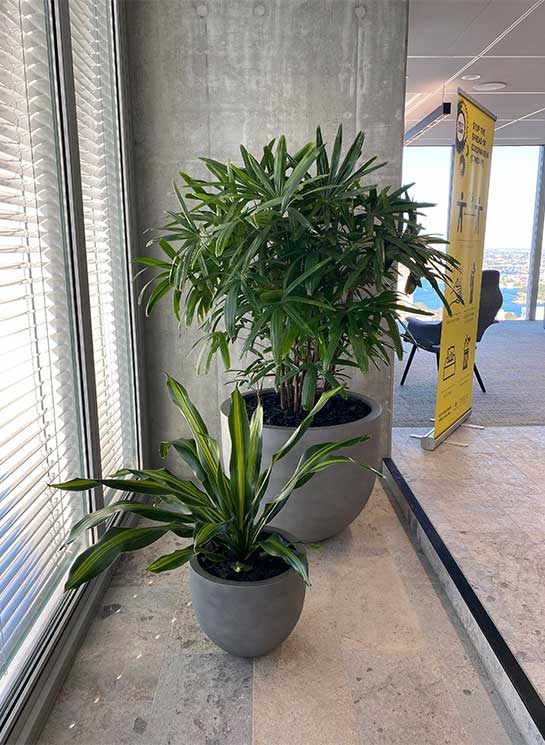
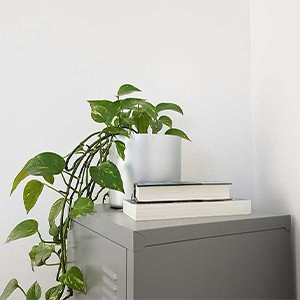
Pothos makes an ideal indoor office plant as it is very apt at removing VOC’s and toxins from the surrounding air.
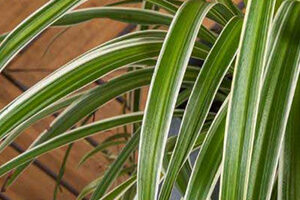
The Spider plant is effective in removing carbon monoxide, xylene and formaldehyde from the air.
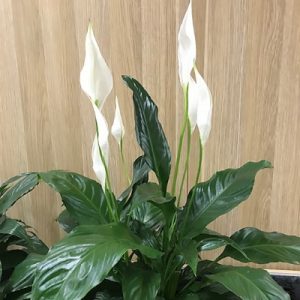
The Peace Lily can improve your indoor air quality by as much as 60% and can reduce mould spore levels that could potentially grow in the indoor environment.
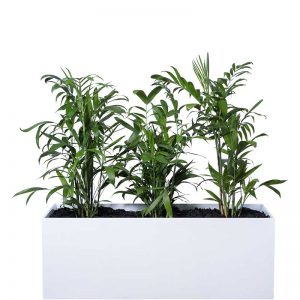
The Bamboo Palm is effective at eliminating formaldehyde, filtering carbon monoxide and removing benzene from the air.
Including a bit of nature in your office design has a huge number of benefits. After all, humans are naturally drawn to the outdoors. So, when we can’t be outside with nature, it makes perfect sense to bring nature indoors to us. Healthy interior plantscaping will instantly enhance any indoor environment. Plants play a vital role in providing a happy and healthy place to work.
The beauty of indoor office plants is that they not only help to clean the air of harmful toxins, but they provide a fresh new vibe, along with many health benefits as well.
Indoor office plants can provide huge positive benefits to the overall health and wellbeing of employees and in turn, contribute to the success of the organisation in which they work. While most of us appreciate the visual beauty of healthy, living indoor plants, it’s not always clear of the health benefits they provide.
Some of the benefits of having indoor office plants include:
As previously mentioned, it’s been estimated that 80% of the population live in urban areas and most of us spend around 90% of our time indoors. Indoor air pollution can be more polluted than the outdoor air and can contain toxins such as:
The effects of these toxins in the short term can bring about Sick-Building Syndrome (SBS). Symptoms of SBS include wheezing, coughing, headaches, fatigue, sore throat or eyes, nausea and lack of concentration. Long-term results can be much more serious.
UTS Dr Fraser Torphy, AssDipAppSc, BSc (Hons), PhD, a microbial ecologist and biostatistician estimates there are between 1,400 – 2,000 annual deaths in Sydney attributed to poor urban air quality. These figures are alarming.
Research about indoor plants has been carried out by Scientists at the UTS and in their brochure Plants at Work, they list the many benefits of indoor plants.
Their research found that indoor plants can contribute to meeting at least 75% of the indoor environmental quality (IEQ) criteria.
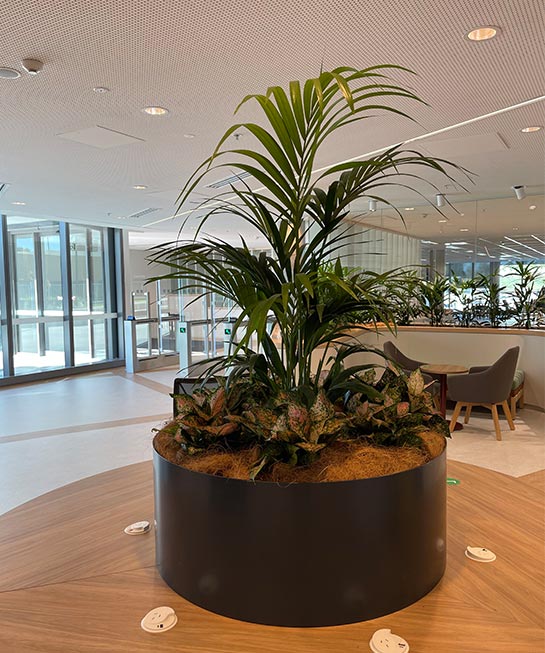
Research studies show the effect office plants have on your staff. These include reducing drowsiness, stress, sore eyes & throat, noise pollution and carbon monoxide. Plants are also credited with reducing blood pressure, fatigue and headaches. One of the top benefits of indoor plants is that they improve staff concentration and productivity.
Due to the many health and wellbeing benefits, placing plants around the office has been reported to decrease minor illnesses by 30% and reduce absenteeism by up to 50%.
Our environment has an impact on how we feel, think and act. Because indoor plants filter the air, improve the humidity and enhance the environment, it’s highly likely your employees will feel healthier and happier at work. This can help to increase job satisfaction and overall benefit the success of your business. When your workers thrive, your business will thrive.
An American study surveyed 170 respondents to explore what effects indoor plants had on a ‘business’s image to a visitor’ (potential customer/client). It could be expected that the same responses will be also be shared by the firm’s staff. There was universal agreement amongst respondents on a number of issues, including that indoor plants led to the perception that the business was:
For many businesses, the reception is the first area that a visitor or potential client will see and perhaps spend time waiting. This area is a great opportunity to provide a warm welcome and positive first impression to visitors – and remember, a first impression is a lasting impression.
Do you feel tired and dreary thinking of your office space? Does your office space lack spark and inspiration? Does your office space look dull and a bit boring?
Perhaps you just don’t have the time. Or you don’t quite know where to start. You know it needs a lift, but you just can’t put your finger on what’s wrong.
Working in a dull and dreary environment can have a negative effect on your productivity and creativity. As humans, we thrive in an environment that is both visually attractive and healthy.
In fact, Lohr (1992) found that participants in a study looking at staff productivity showed that ‘living plant presence’ is highly effective in improving staff satisfaction and productivity. Participants showed 12% more productivity and less stress than those who worked in an environment with no plants – a significant financial and ‘staff health’ benefit for employers in today’s competitive marketplace.
Modern offices can often be an open plan layout. Background noise is a common cause for distraction among staff. This can use a lot of mental energy, resulting in poor productivity.
The good news is that indoor office plants are useful in decreasing noise through absorption, deflection, or refraction processes. The results are instant. Green Walls, in particular, are very effective at refracting sound due to the large volume of plant coverage. Reducing background noise can help employees to concentrate and improve their focus.
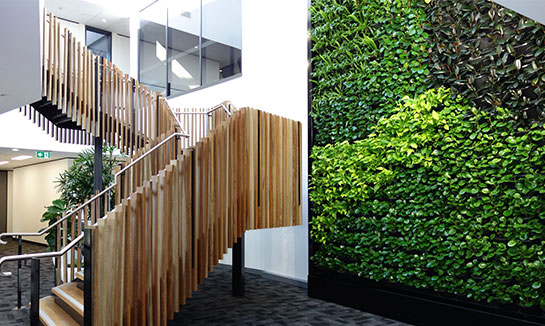
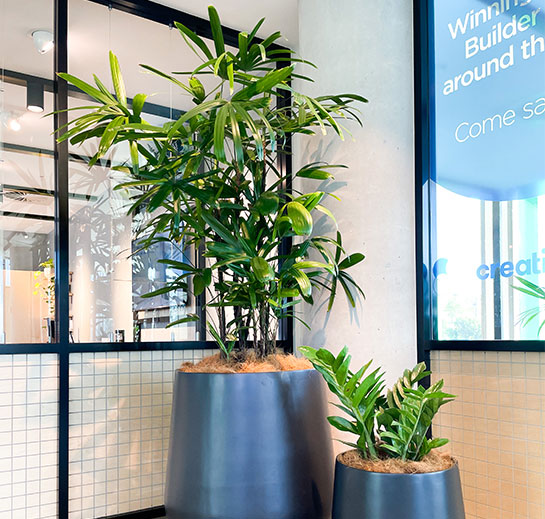
Our indoor working environment can be a complex and busy space. Having access to nature indoors can help our mind to relax and explore our creative side. Some suggestions to really get the maximum benefits of indoor plants are:
According to The Human Spaces Report regarding The Global Impact of Biophilic Design Within the Workplace, those who worked in environments containing natural elements such as indoor plants were 15% more creative. A 2017 study ran a series of experiments, concluding that the colour green itself enhances creative performance. Our team can provide the green design you need with our office plant hire to boost your staff’s creativity.
Not only do our indoor plants create a powerful visual punch, but they play an important role for human beings. Our health, mood and motivation all affect our rate of productivity.
In today’s society we spend a considerable amount of time indoors. A lot of the time, we lack fresh air and natural light. Air-conditioning, office equipment and machinery can pollute and dry out the indoor air we breathe.
Scientific studies have shown that plants at work improve absenteeism, tiredness and productivity. Everyone deserves a happy, healthy place to spend the majority of their working day.
According to a study by Exeter University, having a few plants in the workplace increased well-being by 47%, productivity by 38% and creativity by 45%, because employees who actively engage with their surroundings are better workers. This is good news from a business profitability view.
Psychological benefits of indoor plants include:
A 2015 study conducted by Dr Chris Knight concluded that 15% of employees were more productive once indoor plants were introduced. Plants are proven to provide psychological engagement. Working in an environment where you are psychologically engaged promotes feelings of happiness and productivity. Dr Chris Knight’s research indicates plants within offices and homes increases workplace satisfaction and improved concentration. Greenery within the office increases productivity and engagement through physical, cognitive and emotional involvement within work.
The Green Star Rating System is an internationally trusted and recognised sustainability rating system introduced by the Green Building Council of Australia in 2003. This rating system is used for the design, construction and ongoing operation of sustainable buildings and fitouts.
It is a voluntary rating system that is changing the way our built environment is designed, constructed and operated.
Green Star is aimed at creating healthy places for people to live and work, minimising the environmental footprint and financial spending for businesses.
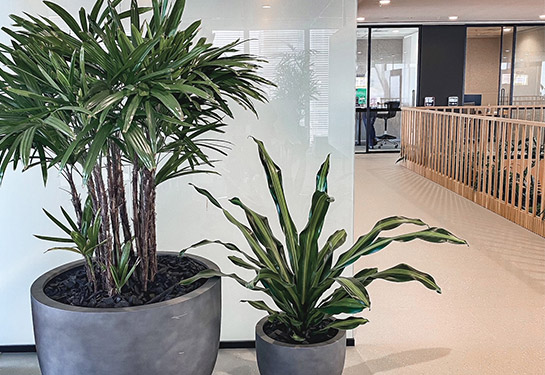
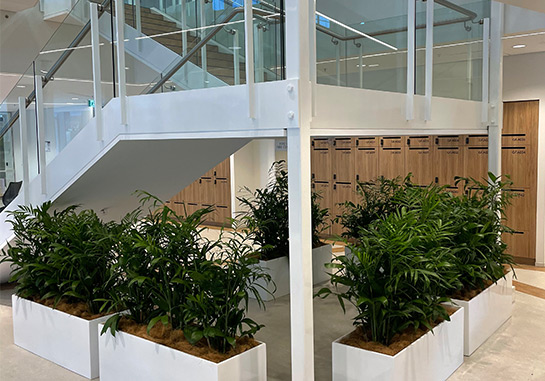
The Green Building Council of Australia have included indoor office plants in their rating assessment of a Green Star building’s interior. Indoor plants hold a value of 2 credit points towards Indoor Environment Quality (IEQ-15) “Green Star – Interiors” rating, however plants must be maintained by a professional office plant hire company. This ensures the condition of the plants are maintained for maximum health of the plants.
Nowadays, there is much more emphasise on the impact our carbon footprint is leaving on the environment. More and more designers and architects are now using the Green Star Rating System.
According to the Green Building Council of Australia, Green Star Buildings produce 62% fewer greenhouse emissions and use 66% less electricity than the average Australian building. Choosing Green Star can help you save money, create a healthy place for people to work and minimise your environmental footprint, helping to build a better future for us all.
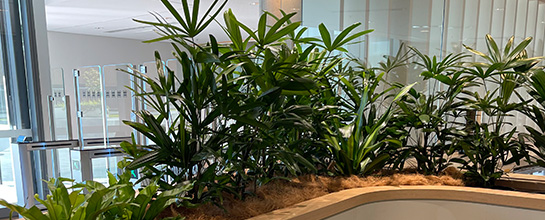
According to reports from NASA and many other studies, some of the most beneficial indoor plants that have proven to help purify the air of harmful toxins include:
Choosing the most suitable indoor plants for your office will depend on various facets. For example, the amount of lighting (natural or artificial) and available space. When it comes to choosing a pot or container for your indoor office plants, we have a range of stunning styles available to suit all designs and spaces. We also offer a custom colour match service if you’re looking for a particular colour.
Contact us today for an easy no-obligation consultation for your workplace plant hire needs.
Plants are also fantastic in classrooms! Having indoor plants in schools is an ideal way make students and their families feel welcome. Adding some live greenery is nature’s way of saying you belong here. Indoor plants can be used to enhance school staff rooms, school lobbies and school offices. There are many benefits of indoor plants at schools and much research about plants in the classroom has been done over the years to show these benefits.
Some Key Benefits of Living Classroom Plants:
Read more about the benefits of plants at school.
Renting indoor plants is far more beneficial than buying them yourself and will save time, money and disappointment of costly errors.
Some of the benefits are:
Our team at Tropical Plant Rentals have helped many organisations to beautify and improve the quality of their office space with lush greenery. We can consult with you and advise of plants that are best suited to your environment, depending on light availability and layout. We have over 45 years’ experience in providing quality indoor office plant hire, and always ensure your hire plants are looking their absolute best with our regular maintenance program. We stock an assortment of healthy, stunning indoor hire plants that can be complemented with a choice of stylish designer pots from our quality range.
Tropical Plant Rentals are a professional indoor plant hire and maintenance company. We supply quality, lush indoor plants and stylish designer pots as well as customised living green wall designs. With over 45 years’ experience, we have a specially trained team to work with you or your designer to create a customised green design to suit your indoor space, whether big or small.
We also specialise in event plant hire. If you’d like to beautify your next event with lush greenery, contact our friendly team for a quote.
Servicing all of Sydney and the Sydney metro area, Newcastle, Wollongong, Canberra, Brisbane, Gold Coast, North Queensland, Geelong, Melbourne CBD and the Melbourne metro area.
Contact us for a fuss free – no obligation consultation or call 1800 631 365.